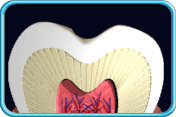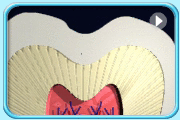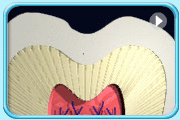Early tooth decay is usually painless and the tooth surface seems intact when examined by the naked eye. Tooth decay at the adjacent tooth surfaces is even more difficult to be detected and they often need to be confirmed by radiographs.

The dentist may apply high concentration topical fluoride such that early tooth decay lesions can be repaired.

A cavity may appear on the tooth and discomfort may be felt on eating.

At this stage, cavity appears on the tooth and causes severe pain. The pulp tissues are infected by the bacteria and may become necrotic. The bacteria may spread from the pulp to the surrounding periodontal tissues via the apex of the tooth, leading to inflammation or even the formation of abscess.
